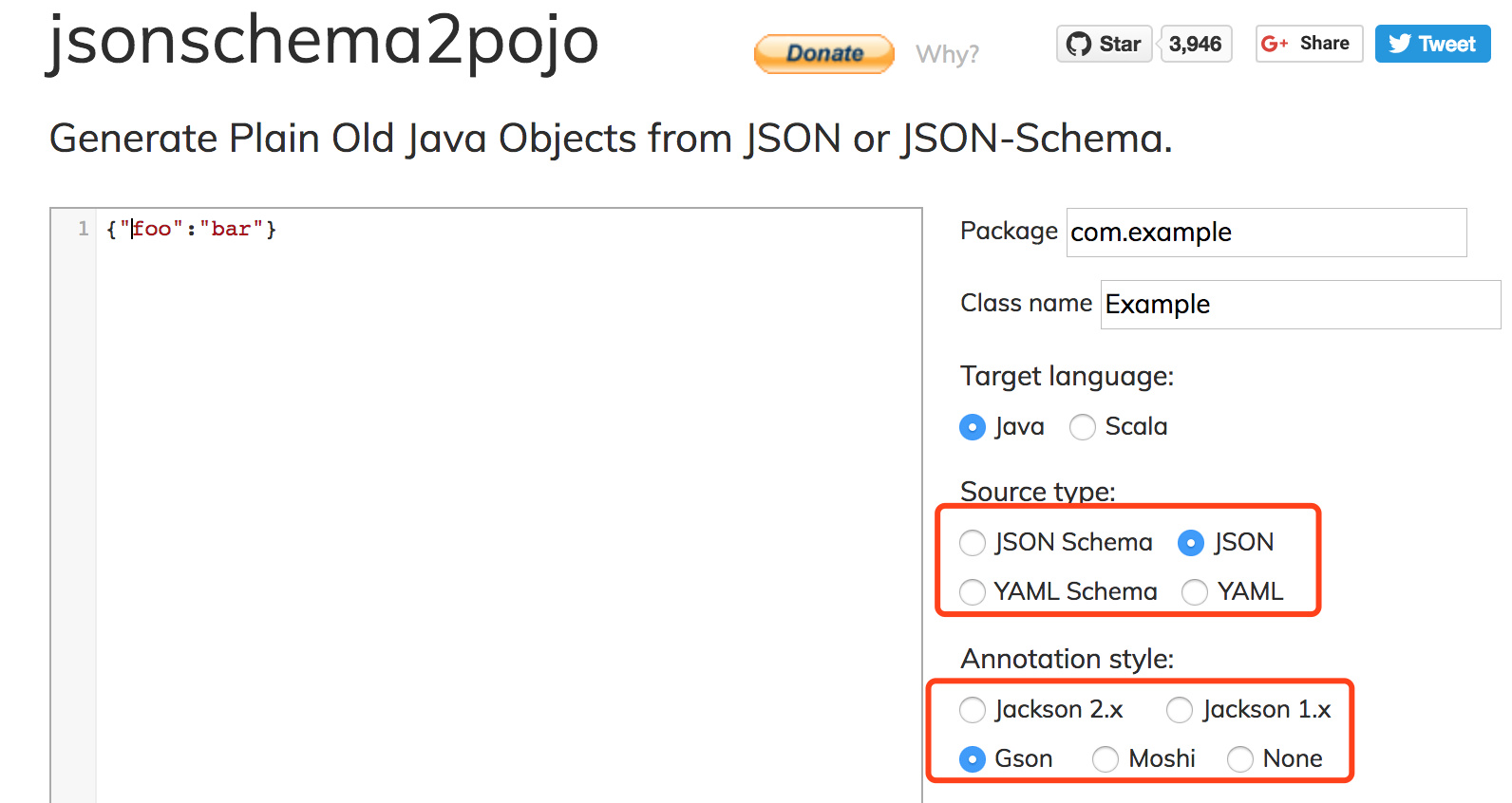$ ls ~yifei/notes/
使用 Gson 解析 json 文档
Posted on:
Last modified:
解析 json 有两种流派:
- event-driven json parse: iterate the document, not loading all into memory
- document-based json parse: load the full document into memory once for all.
在 Python 中可以很容易的解析json文件,Python 中的 json.loads 是 document-based。而在 java 中可以使用 event-driven的。个人感觉这种 event-driven 的解析方式是多此一举,json本来定位就是小型的数据传输和配置存储,如果生成了一个很大的 json,应该考虑换用xml了。
在 Java 中需要生成和 JSON 文档意义对应的 JavaBean 文件,这样才能解析到 Java Class。
把你的 json 文件的例子首先编写好,然后可以通过这个网站生成 JavaBean:http://www.jsonschema2pojo.org/

在 Android Studio build.gradle 文件中添加依赖:
dependencies {
compile "com.google.code.gson:gson:2.3.1"
}解析
package com.example;
import com.google.gson.annotations.Expose;
import com.google.gson.annotations.SerializedName;
public class Example {
@SerializedName("foo")
@Expose
private String foo;
public String getFoo() {
return foo;
}
public void setFoo(String foo) {
this.foo = foo;
}
}Gson gson = new Gson();
String json = "{\"foo\": \"bar\"}";
Example example = gson.fromJson(json, Example.class);
// 解析:JavaBean对象 = gson.fromJson(json, JavaBean.class);参考资料:
© 2016-2022 Yifei Kong. Powered by ynotes
All contents are under the CC-BY-NC-SA license, if not otherwise specified.
Opinions expressed here are solely my own and do not express the views or opinions of my employer.
友情链接: MySQL 教程站